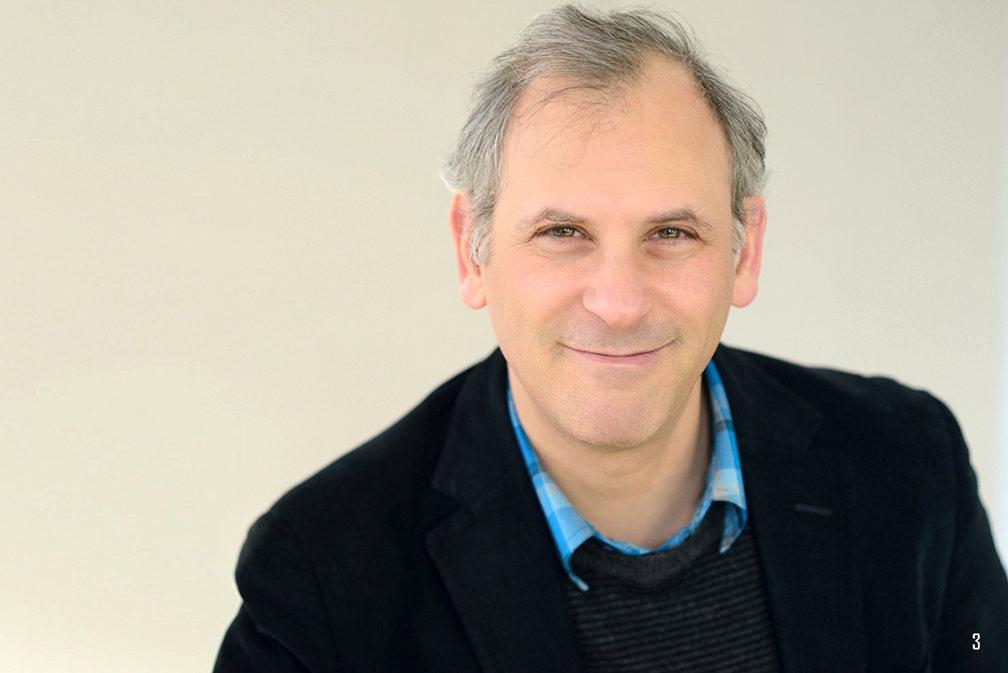Eric Lyon Receives Guggenheim Fellowship to Explore the Edges of Spatial Orchestration
May 30, 2018

Imagine sitting in a darkened room, watching a group of musicians strike their marimbas. And although light illuminates the stationary performers, it seems as though their music is traveling up the sides of the walls and onto to the ceiling, only to crash down upon you. Your reflex is to duck.
Human cognition and hearing are sensitive to the location of sound. This is the essence of the spatial audio research behind Eric Lyon’s “Marimbas Everywhere,” a composition he created for the Virginia Tech Percussion Ensemble with funding from his new Guggenheim Fellowship Award in Music Composition.
To fulfill the yearlong fellowship, Lyon will produce three additional multichannel compositions created for the innovative acoustics and technology of the Cube. The 150 loudspeakers lining the walls and ceiling of the Cube — a state-of-the-art performance space in Virginia Tech’s Moss Arts Center — provides an intimate and immersive sound experience.
“I’ve been interested in multichannel music since 2004,” said Lyon, an associate professor of creative technologies in music at the Virginia Tech School of Performing Arts. “Multichannel music is electronic music that is projected over loudspeakers that surround the audience.”
Unlike stereo sound, which uses two speaker sources and favors a single perspective — the center or “sweet spot,” multichannel compositions change depending on the performance space, the number and placement of loudspeakers, and the position of each individual audience member.
“Spatial orchestration is based on the idea that a work of music doesn’t have to have a static approach,” Lyon said. “The piece does not exist as a fixed recording, but as flexible code that can be rewritten for each performance space and speaker array.”
Few performance spaces rival the Cube. Its uniqueness inspired Lyon to apply to the John Simon Guggenheim Memorial Foundation to fund work tailored to the facility’s sound capacities.
“My proposal was to write multichannel music for the Cube, involving both innovative approaches to spatialization and interactions between performing musicians and electronic sound,” he said. “Multichannel audio has a promising future, and its technology is becoming valuable to a wide range of artists.”
The members of the grant committee agreed. The Guggenheim Foundation funds only 175 of its more than 3,000 applicants each year, and, in 2018, just a dozen were in music composition.
Lyon credits several of his Virginia Tech colleagues with helping him garner this award. Much of his applicant portfolio featured faculty members performing his compositions, including Jason Crafton, an assistant professor of trumpet, who performed with Fifth Bridge, an electroacoustic trumpet quintet, and Kyle Hutchins, an instructor of saxophone.
“The award is a powerful endorsement of a vision that might seem quixotic because certain sound effects can still be produced only in the Cube and a few similar facilities throughout the world,” Lyon said. “The vision is that such facilities — and an appreciation of multichannel music — will be much more widely distributed in the future.”
When Lyon first learned about Virginia Tech and the Cube, it was the forward-thinking attitudes of the university and its embrace of the arts that enticed him. Benjamin Knapp, director of the Institute for Creativity, Arts, and Technology, recruited the composer, who was living in Northern Ireland at the time. Once at the university, Lyon felt as though he had found his dream job, a position that straddles both the School of Performing Arts and the Institute for Creativity, Arts, and Technology.
Lyon’s considerable experience in both traditional and electronic-based music stems from a doctorate from the University of California at San Diego, a master’s from Eastman School of Music, and a bachelor’s from Princeton University. Before starting at Virginia Tech in 2013, he had most recently taught at Queen’s University Belfast in Northern Ireland, Manchester University in England, Dartmouth College, and Keio University and the Institute of Advanced Media Arts and Sciences in Japan.
He has written a monograph on audio coding and many journal articles and book chapters, presented at conferences, composed and published recordings, and directed musical festivals, symposiums, and workshops. He was also the architect for Virginia Tech’s Cube Fest and maintains his artistic directorship of the annual summer event.
“We consider Eric to be a fantastic ambassador for the Cube,” said Knapp. “Every year, Eric recruits researchers and composers from across the U.S. and Europe to come to Blacksburg and spend a week composing original, site-specific works using the Cube’s technologies. As a respected composer and researcher with extensive connections in the electroacoustic music community, Eric has helped make the Cube a destination for the world’s top spatial audio artists.”
Lyon is also an advocate for advancing Virginia Tech to the forefront of spatial audio technology. He plans to continue collaborating with his peers as he pushes his research further with three more compositions through his Guggenheim award.
“Nearly every faculty member in our department is deeply involved in new music, as a composer, a conductor, or a performer premiering new works,” said Tracy Cowden, chair of the Department of Music. “We are very proud of this recognition of Eric’s artistry and contributions to the field and look forward to his creative output as a Guggenheim Fellow.”
Written by Leslie King
Related Stories
The future of sound begins in the Cube
New creative technologies in music degree option reimagines instruments and soundmaking





